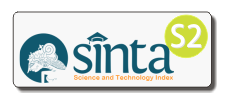Estimating Inclusiveness of Growth in Sub-Sahara African Countries: a VAR Approach
Abstract
Keywords
Full Text:
PDFReferences
Adams J, R. H. (2004). Economic growth, inequality and poverty: estimating the growth elasticity of poverty. World Development, 32(12), 1989-2014.
Adeniyi, O., & Egwaikhide, F. O. (2013). Saving-investment nexus in developing countries: does financial development matter?. Journal of Economic Development, 38(2), 119-140.
Aghion, P., and P. Howitt. (1997). Endogenous Economic Growth. Cambridge MA: MIT Press.
Aghion, P., & Bolton, P. (1997). A theory of trickle-down growth and development. The review of economic studies, 64(2), 151-172.
Ahluwalia, M. S. (1976a). Income distribution and development: Some stylized facts. The American economic review, 66(2), 128-135.
Ahluwalia, M. S. (1976b). Inequality, poverty and development. Journal of development economics, 3(4), 307-342.
Ahluwalia, M. S. (2011). Prospects and policy challenges in the twelfth plan. Economic and Political Weekly, 88-105.
Ali, S. S., Tahir, S., & Arif, G. M. (1999). Dynamics of growth, poverty, and inequality in Pakistan [with Comments]. The Pakistan Development Review, 837-858.
Balami, D. H. (2006). Macroeconomic theory and practice. Salawe prints, Off Leventies, Wulari, Maiduguri.
Bourguignon, F. (2003). The growth elasticity of poverty reduction: explaining heterogeneity across countries and time periods. Inequality and growth: Theory and policy implications, 1(1).
Bourguignon, F. (2004). The poverty-growth-inequality triangle (No. 125). working paper.
Brooks, C. (2008). Introductory Econometrics for Finance. Cambridge University Press, Cambridge.
Clarke, G. R. (1995). More Evidence on Income Distribution and Growth. Journal of Development Economics. 47(2), 403–27.
Datt, G. & Ravallion, M. (1992). Growth and redistribution components of changes in poverty measures. Journal of Development Economics. 38, 275-295.
Deininger, K., & Squire, L. (1996). A new data set measuring income inequality. The World Bank Economic Review, 10(3), 565-591.
Dollar, D., & Kraay, A. (2002). Growth is Good for the Poor. Journal of economic growth, 7(3), 195-225.
Foster, J. E., & Székely, M. (2001). Is economic growth good for the poor? Tracking low incomes using general means. International Economic Review, 49(4), 1143-1172..
Fosu, A. K. (2009). Inequality and the impact of growth on poverty: comparative evidence for sub-Saharan Africa. The Journal of Development Studies, 45(5), 726-745.
Fosu, A. K. (2017). Growth, inequality, and poverty reduction in developing countries: Recent global evidence. Research in Economics, 71(2), 306-336.
Grinspun, A. (2004). Pro-poor growth: Finding the Holy Grail (One Pager 6). New York, NY: International Poverty Center, United Nations Development Programme. Global Monitoring Report, 2015/2016: The World Bank Group.
Janjua, P. Z., & Kamal, U. A. (2011). The role of education and income in poverty alleviation: A cross-country analysis. The Lahore Journal of Economics, 16(1), 143-172.
Kraay, A. (2006). When is growth pro-poor? Evidence from a panel of countries. Journal of development economics, 80(1), 198-227.
McKay, A. (2013). Growth and poverty reduction in Africa in the last two decades: Evidence from an AERC growth-poverty project and beyond. Journal of African Economies, 22(suppl_1), i49-i76.
Narayan, A., Saavedra-Chanduvi, J., & Tiwari, S. (2013). Shared prosperity: links to growth, inequality and inequality of opportunity. World Bank Policy Research Working Paper, (6649).
Nguyen, H. T. T., Nguyen, C. V., & Nguyen, C. V. (2020). The effect of economic growth and urbanization on poverty reduction in Vietnam. The Journal of Asian Finance, Economics and Business, 7(7), 229-239.
Odhiambo, N. M. (2009a). Finance-growth-poverty nexus in South Africa: A dynamic causality linkage. The Journal of Socio-Economics, 38(2), 320-325.
Odhiambo, N. M. (2009b). Energy consumption and economic growth nexus in Tanzania: An ARDL bounds testing approach. Energy policy, 37(2), 617-622.
Odhiambo, N. M. (2011). Growth, employment and poverty in South Africa: In search of a trickle-down effect. Journal of Income Distribution, 20(1), 49-62.
Ogbeide, E. N. O., & Agu, D. O. (2015). Poverty and income inequality in Nigeria: any causality?. Asian economic and financial review, 5(3), 439-452.
Oladipo, S. O., & Olomola, P. A. (2015). A multivariate causal relationship among road transport infrastructure development, economic growth and poverty level in Nigeria. International Journal of Economics and Financial Research, 1(4), 57-64.
Okojie, C. E. (2002). Gender and education as determinants of household poverty in Nigeria (No. 2002/37). Wider discussion paper.
Ravallion, M. (1997). Good and bad growth: The human development reports. World Development, 25(5), 631-638.
Ravallion, M., & Chen, S. (2003). Measuring pro-poor growth. Economics letters, 78(1), 93-99.
Balakrishnan, M. R., Steinberg, M. C., & Syed, M. M. H. (2013). The elusive quest for inclusive growth: Growth, poverty, and inequality in Asia. International Monetary Fund.
Rostow, W. W. (1960). The stages of economic growth: A non-communist manifesto. Cambridge university press.
Sala-i-Martin, X., & Pinkovskiy, M. (2009). Parametric estimations of the world distribution of income. NBER Working Paper, (15433).
Seers, D. (1979). The Meaning of Development, with a Postscript. In Seers, Nafziger, Cruise O’Brien, & Bernstein, pp. 9-30.
Sen, A. K. (1999). Development as Freedom. Oxford: Oxford University Press.
Sims, C.A. (1980). Macroeconomics and reality. Econometrica 48, 1–48.
Thorbecke, E. (2013). The interrelationship linking growth, inequality and poverty in sub-Saharan Africa. Journal of African economies, 22(suppl_1), i15-i48.
Todaro, M. P. (1997). Economic Development. Reading, ma: Addison-Wesley. United Nations. 2014. Millennium Development Goals Beyond 2015. New York: United Nations.
United Nations Economic Commission for Africa/UNDP. (2015). MDGs Report; Lessons learned in implementing the MDGs.
White, H. (1980). A heteroskedasticity-consistent covariance matrix estimator and a direct test for heteroskedasticity. Econometrica: journal of the Econometric Society, 817-838.
World Bank. (2014a). Poverty and Inequality Database 2014. Washington, DC: World Bank.
World Bank. (2014b). World Development Indicators 2014. Washington, DC: World Bank.
World Poverty Clock. (2018). (https://worldpoverty.io/index.html)
Young, A. (2012). The African Growth Miracle. Journal of Political Economy. 120 (4), 696–739.
DOI: http://dx.doi.org/10.17977/um002v14i22022p136
Refbacks
- There are currently no refbacks.
ISSN (Print) 2086-1575 ISSN (Online) 2502-7115

This work is licensed under a Creative Commons Attribution-NoDerivatives 4.0 International License.







